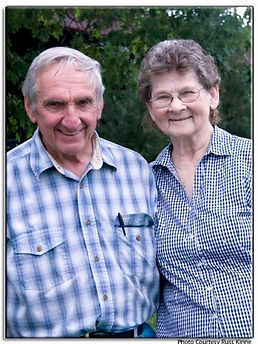

Homer Kolb
In the quiet town of Phoenixville, Pennsylvania, one man's legacy will forever soar above the rest. Homer Kolb, a pioneer in ultralight aviation, passed away on July 12, 2009, he was 78.
Homer's life was marked by innovation, passion, and a deep connection to the world of flight. His journey in aviation began long before the ultralight boom of the 1980s. Homer was initially interested in rotary-wing and the Philadelphia area was the home of some early pioneers like Harold Pitcairn with the first rotary-wing flight in the US in 1928. His company produced production auto gyro planes for many years, just a few miles from where Homer lived and they test prototypes on Homer’s runway to this day. Homer built several gyro gliders and gyro copters and was pursuing his own helicopter designs when a friend was almost killed in a gyro copter crash as he watched (he was plowing his fields at the time). This put him off anything rotary-wing and he built his first airplane which had 4 chainsaw engines, was all metal and not a great performer. He then started to look at larger, lighter structures and developed what he called the Kolb Flyer in 1969. It was the first lighter than man aircraft – weighing only 155 pounds and flew nicely on 2 chainsaw engines. In 1975, John Moody put a motor on a hang glider and the ultralight movement began. Folks that knew Homer wanted to fly, but didn’t have the money for General Aviation aircraft and didn’t feel safe in a glider with a motor bolted on. He started getting requests to sell plans for the Kolb Flyer so he connected with a draftsman friend, plans were made and the Kolb Company was created in 1980. Homer’s design featured full, 3 axis control used welded, aircraft chromoly tubing and all aircraft quality hardware and covering. It was built strong and tough, but still very lightweight. His wing designs evolved to use a large tubular spar and single lift and drag strut which was later copied by others as it proved to be very strong, simple to build and lightweight system.
As the founder of Kolb Company, Homer designed aircraft that would change the way people thought about flight. His designs were not only practical but also captured the spirit of freedom that aviation represents. Over 8,000 Kolb aircraft were built, and countless pilots flew with pride in these machines.
Outside of aviation, Homer’s love for his farm was evident. He spent many years restoring John Deere tractors, including one that had been passed down from his father—a symbol of Homer’s dedication to preserving history and craftsmanship.
Homer was not only a visionary in aviation but a devoted husband and father. He and his wife, Clara, shared a life built on hard work, passion, and love. Together, they grew Kolb Company, turning it into a thriving business before Homer eventually sold it and retired. But his work was never done. Homer remained a fixture at aviation events like Oshkosh and Sun 'n Fun, always eager to reconnect with old friends and meet new ones.
He wasn’t just a designer; he was a friend to everyone. Homer’s reputation for kindness, generosity, and honesty was legendary. Whether flying a plane, restoring a tractor, or f ixing a model train, Homer was the kind of person who could make anything run perfectly.
In 2008, Homer hosted another Kolb Family Fly-In at his farm, bringing together owners of his aircraft from across the country to celebrate his passion for aviation and community.
As Clara so beautifully said, "God must have had something that needed repairing, so He called Homer." And with that, Homer Kolb leaves behind a legacy that will live on in the skies, in the hearts of his family, friends, and fellow aviators.
Homer was more than just an aircraft designer. He was a man of integrity, a generous soul, and a friend to all who knew him. His legacy will forever be a testament to the joy of f light, the value of craftsmanship, and the power of a life well-lived.




